Part 8 of 9
[
"EXHIBIT "F": Attached hereto as Exhibit F is a true and accurate copy of certain pages from the deposition of Greg Jacob by the Select Committee to Investigate the January 6th Attack on the U.S. Capitol on February 1, 2022.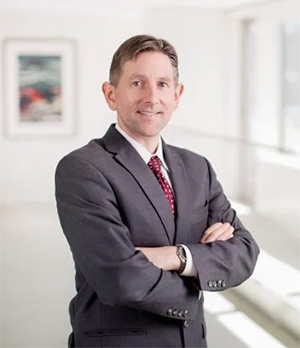
]
OFFICE OF GENERAL COUNSEL
U.S. HOUSE OF REPRESENTATIVES
5140 O’Neill House Office Building
Washington, D.C. 20515
SHER TREMONTE LLP
90 Broad Street, 23rd Floor
New York, New York 10004
ARNOLD & PORTER
601 Massachusetts Ave, NW
Washington, D.C. 20001
Counsel for the Congressional Defendants
UNITED STATES DISTRICT COURT
CENTRAL DISTRICT OF CALIFORNIA
SOUTHERN DIVISION
JOHN C. EASTMAN
Plaintiff,
vs.
BENNIE G. THOMPSON, et al.,
Defendants.
Case No. 8:22-cv-00099-DOC-DFM
Exhibit F4 SELECT COMMITTEE TO INVESTIGATE THE
5 JANUARY 6TH ATTACK ON THE U.S. CAPITOL,
6 U.S. HOUSE OF REPRESENTATIVES,
7 WASHINGTON, D.C.
11 DEPOSITION OF: GREG JACOB
15 Tuesday, February 1, 2022
17 Washington, D.C.
20 The deposition in the above matter was held in room 5480, O'Neill House Office
21 Building, commencing at 10:05 a.m.
22 Present: Representatives Aguilar, Schiff, Murphy, Raskin, Cheney, and Kinzinger.
2 Appearances:
5 For the SELECT COMMITTEE TO INVESTIGATE
6 THE JANUARY 6TH ATTACK ON THE U.S. CAPITOL:
8 KATIE ABRAMS, STAFF ASSOCIATE
9 KRISTIN AMERLING, DEPUTY STAFF DIRECTOR & CHIEF COUNSEL
10 STEPHEN DEVINE, SENIOR LEGISLATIVE COUNSEL
11 MAGGIE EMAMZADEH, STAFF ASSOCIATE
12 SADALLAH A. FARAH, RESEARCHER
13 DANIEL A. GEORGE, SENIOR INVESTIGATIVE COUNSEL
14 TIMOTHY HEAPHY, CHIEF INVESTIGATIVE COUNSEL
15 CASEY ERIN LUCIER, INVESTIGATIVE COUNSEL
16 JOE MAHER, DETAILEE, DEPARTMENT OF HOMELAND SECURITY
17 EVAN B. MAULDIN, CHIEF CLERK
18 BARRY PUMP, PARLIAMENTARIAN
19 GRANT SAUNDERS, STAFF ASSOCIATE
20 JOHN F. WOOD, SENIOR INVESTIGATIVE COUNSEL AND OF COUNSEL TO THE VICE CHAIR
21 BRITTANY M.J. RECORD, COUNSEL
2 For THE WITNESS:
4 A.B. CULVAHOUSE
5 AMANDA SANTELLA
6 O'Melveny & Myers
7 1625 Eye Street, NW
8 Washington, D .C. 20006
Page 82
1 When, as far as you can recall, was the first time you had interaction with Dr. Eastman
2 regarding the 2020 election?
3 A To the best of my recollection, it was at the Oval Office meeting on
4 January 4th.
5 Q And do you know how that January 4th meeting in the Oval Office came
6 about?
7 A So what I do know is the Vice President and Marc were down in Georgia that
8 morning at a rally for Senators Perdue and Loeffler, and I received a call, I believe
9 midmorning, and I think it was from Marc giving me a heads up that I was going to be
10 asked down for a meeting in the Oval Office.
11 Q Do you know -- so that's sort of how you learned about it, but do you know
12 how the meeting was initiated?
13 A No.
14 BY MR. HEAPHY:
15 Q And I'm sorry. When you say "Marc," you mean Marc Short, or
16 Mark Meadows?
17 A Marc Short.
18 Q Okay.
19 BY MR. WOOD:
20 Q And then did you, in fact, attend such a meeting?
21 A Yes.
22 Q Okay. Who else attended the meeting?
23 A Marc Short and the Vice President, John Eastman, the President. There
24 was about a 5-minute period that Mark Meadows came in on a different subject and then
25 left.
Page 89
1 advocated for Pence to reject electors, do you agree or disagree with that statement by
2 Dr. Eastman?
3 A So I think the most accurate way to -- because I think a yes-and-no question
4 is going to be difficult on this. I think, at the meeting on the 4th, Eastman expressed the
5 view that both paths were legally viable, but that the preferred course would be a
6 procedural course where the Vice President would send it back to the States, that that
7 would be more palatable than a mere invocation of raw authority to determine
8 objections himself.
1
2 [1:18 p.m.]
3 BY MR. WOOD:
4 Q Did he start out with that position, or did he gravitate towards that position
5 over the course of the meeting?
6 A I think that was threaded throughout, that, again, both were legally viable
7 but that the preferred course would be to send it back to the States.
8 Q Okay. Then exhibit 31, the next one in your binder, is the longer
9 version -- or a longer version of a memo. Again, I'll represent to you that this is from
10 John Eastman. I assume that -- I think you said actually earlier that you didn't see either
11 of his memos --
12 A I don't recall seeing it.
13 Q -- while you were in the White House.
14 Do you have any idea whether this was written before or after the one we already
15 looked at?
16 A Since it's longer, I assume after, but I have no basis to know.
17 Q This goes through several different scenarios. Page 4, Roman numeral III,
18 "War Gaming the Alternatives," some of which Biden wins; some of which Trump wins.
19 Can you tell us whether Dr. Eastman went through all of these alternatives with
20 the President in the meeting on the 4th?
21 A I don't think he said.
22 Q Can you tell us whether he went through some of these alternatives in the
23 meeting with the President on the 4th?
24 A Not at length. We had a longer discussion of them on the 5th. And I just
25 don't recall. It's hard for me to disaggregate what he might have said in shorthand
1 during the conversation on the 4th.
2 Q Okay. So I'm going to share with you another description that Dr. Eastman
3 gave of his meeting that you attended with the President and the Vice President on
4 January 4th.
5 Mr. Wood. Do we have this one?
6 Mr. Saunders. One?
7 Mr. Wood. So Boyles, yes.
8 Mr. Saunders. Yes.
9 Mr. Wood. Okay. So why don't we go ahead and play it.
10 And this is a podcast, I believe, where -- or a radio show, I believe, where Dr.
11 Eastman was interviewed by Peter Boyles.
12 [Audio recording played.]
13 Mr. Wood. You can stop.
14 BY MR. WOOD:
15 Q Do you think that's an accurate description of the advice Dr. Eastman gave to
16 the President and Vice President?
17 A Not all of it.
18 Q Okay. Can you tell us which parts -- and we can go sentence by sentence if
19 you want or you can just tell us which parts you take issue with.
20 A Well, it's the part where he -- up to the point where he says, "Open
21 question," that sounds -- he might have used those words. I don't recall whether he
22 used them specifically.
23 As I've noted before, he thought that the more prudent course was a procedural
24 send it back to the States, rather than reject electors.
25 But I do not recognize the statements that he makes thereafter where he says
1 that it would be foolish to reject the slates. I don't recall him using that word, and I
2 would be shocked if he had. And I don't recall any of that sequence that sort of goes
3 from that point forward.
4 Q And what he describes there as being a foolish move, meaning the Vice
5 President unilaterally rejecting electors, is that exactly what he urged the Vice President
6 to do when he met with you on the 5th?
7 A When he met on the 5th -- and I have contemporaneous notes of that
8 meeting that reflect this -- he came in and said, "I'm here asking you to reject the
9 electors." That's how he opened at the meeting.
10 Q Did he say, "I'm here on behalf of the President to ask you to reject the
11 electors"?
12 A I don't -- I don't recall. I don't think that he specifically said on behalf of the
13 President.
14 Q Okay. But I believe you had said that in at least one email around that
15 time, whether it was before or after, he stated that he was representing the President?
16 A In an email on the 6th, he referred to the President as his client.
17 Q And prior to that he had been -- I can represent to you he had been listed on
18 pleadings as representing the President, whether you're aware of that or not.
19 So I'm going to ask you more about the meeting on the 5th later, but I don't want
20 to forget to follow up on what you just mentioned about contemporaneous notes.
21 Are those contemporaneous notes that you have in your personal possession or
22 are those in the Archives, or where would they be?
23 A No, they're personal notes, about three lines of notes, and I think we have
24 them. You're welcome to them.
25 Q Okay. Great. Maybe during a break we can ask you to give us to
1 them -- give them to us.
2 Mr. Culvahouse. You have them with you, right?
3 Ms. Santella. Uh-huh.
4 Mr. Wood. Great. So we'll get to that. But before we do that, I want to play
5 another clip here. And I think this is -- is this next one from the same radio show
6 interview?
7 Mr. Saunders. Immediately afterwards.
8 Mr. Wood. Okay.
9 [Audio recording played.]
10 BY MR. WOOD:
11 Q So we'll leave aside that Dr. Eastman got your name egregiously wrong and
12 we'll leave aside whether or not Marc Short, in fact, leaked something to The New York
13 Times.
14 But Dr. Eastman describes as a false story the reporting that he had asked the Vice
15 President to simply unilaterally declare President Trump reelected.
16 I know you said that he presented alternatives. Is it, in fact, false to say that Dr.
17 Eastman at some point during the meeting asked the Vice President to simply unilaterally
18 declare President Trump reelected?
19 A So I've got to disaggregate the 4th and the 5th.
20 Q Okay. On the 4th.
21 A On the 4th, I think that he said that both were legally viable options. But I
22 do think that he said that he was not saying that that was the one that the Vice President
23 should do.
24 Q Okay.
25 A That it would be more prudent to do the other.
1 Q And we're going to get to more detail on the 5th, but since you brought it
2 up, what was his advice on the 5th?
3 A He, again, came into the meeting saying, "What I'm here to ask you to do is
4 to reject the electors."
5 And aside from my contemporaneous notes from that meeting, which weren't
6 much, you have my email from January 6th where I refer to the fact that he retreated to a
7 position the evening of the 5th asking for what I would call the procedural solution of
8 send it back to the States as opposed to what he had been asking for in the earlier
9 meeting.
10 Q So it sounds like you're saying that at the beginning of the meeting on the
11 5th, Dr. Eastman was taking an even more aggressive position regarding the role of the
12 Vice President than the position he took in the Oval Office on the 4th?
13 A Yes.
14 Q And do you know what caused him to take the more aggressive position on
15 the 5th?
16 A I don't.
17 Q At the meeting on the 4th, did the President take a position?
18 A Again, I can't speak to the President's communications in that meeting. I'm
19 happy to confirm or deny accounts with respect to Mr. Eastman.
20 Q Okay. Did you believe -- well, I'll ask it this way.
21 In light of the conversation you had had with the President and others on the 4th,
22 were you surprised by the position that Dr. Eastman took at the beginning of the meeting
23 on the 5th?
24 A So I was at least mildly surprised because I had done a -- well, you have the
25 memorandum that I did for the Vice President analyzing what I had understood Mr.
1 Eastman's proposal, you know, the thing that he thought was the preferred course of
2 action, from the night before. And so I was surprised that we instead had a stark ask to
3 just reject electors.
4 Mr. Wood. Okay. I'm going to get to that in a moment, but I will ask if we
5 should take a lunch break now, or does anybody want to ask a question before we get to
6 the lunch break?
7 Mr. Heaphy. Yeah. Can I just quickly follow up on the January 4th meeting?
8 BY MR. HEAPHY:
9 Q Did you or the Vice President or Mr. Short make clear during that meeting
10 what the Vice President's now consistently held position was about his authority?
11 A So the Vice President mostly asked a series of questions in that meeting of
12 Mr. Eastman. And from my -- and, again, I mentioned this before -- from my very first
13 conversation with the Vice President on the subject, his immediate instinct was that there
14 is no way that one person could be entrusted by the Framers to exercise that authority.
15 And never once did I see him budge from that view, and the legal advice that I provided
16 him merely reinforced it.
17 So everything that he said or did during that meeting was consistent with his first
18 instincts on this question.
19 Q Yeah. And were you -- was your impression going into that meeting that
20 his position, the Vice President's position, was clear to Mr. Eastman and the President
21 before that meeting began on January 4th?
22 A I mean, it was clear to me that Mr. Eastman was trying to persuade the Vice
23 President to what he understood to be a different place than where the Vice President
24 was.
25 Q Okay. And when you talk about the preferred course -- you a couple of
1 times have said the preferred course or the more prudent course -- was your impression
2 that Mr. Eastman thought it was preferred because it might be more palatable to the Vice
3 President or it was preferred on the merits of a constitutional analysis?
4 A So on the -- in one of my conversations with him on the 5th, the afternoon of
5 the 5th, or maybe early evening, he acknowledged that the legal basis for the two
6 positions was the same. You couldn't get there either way unless you -- because to get
7 to the procedural position, you had to set aside a number of the positions of the Electoral
8 Count Act, which you couldn't do unless the President basically had plenary constitutional
9 authority to resolve these things.
10 So the legal theory wasn't different. He thought that it was more politically
11 palatable. I don't think that he ever termed that in terms of more palatable to the Vice
12 President as opposed to -- my impression was he was thinking more acceptance of the
13 country of the action taken.
14 Q I see. So my question is really was he -- you described it as trying to
15 convince the Vice President, to move the Vice President. Was this preferred course of
16 just delay, in your sense, an attempt to get something that he thought the Vice President
17 could potentially agree to as opposed to a unilateral rejection of or acceptance of
18 alternate electors?
19 A So it's possible with respect to the 4th.
20 So on the 5th we have the meeting that starts late morning because he was
21 delayed for the Georgia proceedings, and there he makes it clear: Reject.
22 When he comes back with the procedural theory later, at that point he's very
23 clear, "I know you are not going to just reject. Would you consider this?"
24 Q Yeah. It's been described to us as a pivot, that he takes the pivots from,
25 okay, if you're not going to reject these electors, maybe you will just delay, send it back to
1 the States for some period of time.
2 It sounds like to me -- first of all, would you agree that it was a pivot? And, if so,
3 did it occur really late on the 5th as opposed to before the meeting on the 4th?
4 A So, yes. I mean, there was -- before the meeting on the 4th, there was
5 nothing for him to pivot from.
6 Q Okay.
7 A That was the first time that I saw Mr. Eastman or heard anything from him
8 with respect to the whole thing.
9 I agree that it was a pivot, and he was quite clear in saying, "I've heard you loud
10 and clear. You're not going to do that. Would you now consider this?"
11 Q I see. And that occurred in an evening conversation on the 5th, which I
12 think Mr. Wood will get to.
13 A Starts in the afternoon and then a couple of calls into the evening.
14 Mr. Heaphy. That's great. Thank you.
15 Mr. Wood. Okay. Take a lunch break?
16 Mr. Maher. Actually, can I ask one more question about the 4th?
17 Mr. Wood. Yes.
18 Mr. Maher. So after the meeting on the 4th, did anybody from the White House
19 Counsel's Office reach out and ask you your view of the legality of any of those issues?
20 The Witness. So I want to be careful in general with respect to conversations
21 with the White House Counsel's Office. I think on this one I'm, given this narrow
22 timeframe, I'm happy to say no. But I'm also sensitive to the fact that they've robustly
23 invoked privilege with respect to my interactions with Counsel's Office.
24 So if I was concerned that an answer would start to give away substance of any of
25 that, I wouldn't be able to answer. But the answer to that is no.
Page 105
1 January 5th as it pertains to the Vice President's role in the 2020 election.
2 A Sure. So at the end of the meeting on the 4th, it had been left that I would,
3 as I've indicated, I would meet with Mr. Eastman, I would receive whatever materials it
4 was that he wanted us to look at that he thought supported his view.
5 This sort of serves two functions. One, it freed the Vice President up to just
6 focus on getting his statement done, because he was working on it up at the residence
7 that morning; and it enabled me to make sure that there were no, sort of what I would
8 call procedural faults on our part, that there was nothing we had ever failed to look at.
9 No one was ever going to say that the Vice President only reached this conclusion
10 because we just didn't take the time to look.
11 So I think we were originally supposed to meet first thing in the morning, but he
12 had an argument in court in Georgia that went long.
13 So my recollection is that he got over at about 11 o'clock. We met in Marc
14 Short's office. The meeting --
15 Q Which office, in the West Wing or in the Old Executive Office Building.
16 A Marc's office in the West Wing was about the size of the inside of this U right
17 here [indicating].
18 [Laughter.]
19 So in the Old Executive Office Building. And it was me, Marc, and Eastman.
20 And he came in and said that the request that he was there to make of us is that we
21 reject the electors.
22 He acknowledged that there had been discussions of other possibilities the day
23 before, but that's what he was here to talk about today.
24 Q Okay. I'm just going to interrupt you briefly.
25 So you've given us handwritten notes. I'd like to have this marked as exhibit 86.
1 And feel free to refer to that.
2 A I'm not sure I actually have a copy myself.
3 Q Okay.
4 A But, yes, you'll see what I -- I didn't write down a lot because there wasn't a
5 lot that he said that was new to me.
6 Ah, I do have a copy.
7 So, yes, the first thing that I wrote was, "Requesting VP reject." That was the
8 context.
9 Q And that meant Dr. Eastman was requesting that the Vice President reject
10 the Biden electors from certain contested States. Is that right?
11 A Yes, from a set of between five and seven contested States. New Mexico
12 and Nevada, as I understood it, were sort of on the bubble in his thinking as to whether
13 they were disputed or not. But the other five, Georgia, Arizona, Michigan, Wisconsin,
14 Pennsylvania, were all in the clearly disputed bucket. And then there were two that
15 were of a more uncertain status, as I understood it.
16 Q And I think you answered this earlier, but he -- is it correct that Dr. Eastman
17 did not expressly state whether the President had asked him to make this request?
18 A I don't recall him saying that.
19 Q Okay. But you were aware that he was a representative of the President in
20 some capacity, weren't you?
21 Let me rephrase that.
22 As you sit here today, knowing everything you know, is it fair to say that he was
23 there in some capacity representing the President of the United States?
24 A He represented to me on the 6th that the President was his client, and there
25 was nothing inconsistent about the interactions I had with him on the 5th or the 4th with
1 that representation. So I don't know it to be true, but I assumed it to be true for
2 purposes of my interactions with him.
3 Q And what was your reaction when he requested that the Vice President
4 reject electors from certain States?
5 A So I was surprised because it was one of the things that I felt he had been
6 pinned down on the day before, was that he was not saying that that's what we should
7 do, but now that's what we were being asked to do.
8 But it also, to some extent, simplified things for me because the complications of
9 the procedural case and having to go through all the different sections of the Electoral
10 Count Act that were at issue with that became somewhat less pertinent to the discussion.
11 So from his perspective, his objective was to persuade me. I sort of viewed it as
12 my challenge to use Socratic questioning during the course of the thing to see if I could
13 persuade him that there's just no way that a small mind -- a small government
14 conservative would ever adopt the position that he was taking. So that was my basic
15 reaction.
16 And we then had a very long discussion that covered the entire history of
17 constitutional provisions. We discussed examples, like the Adams example and the
18 Jefferson example, both of which were brought to prominence by Bruce Ackerman, a law
19 review article that we were well aware of.
20 And I essentially got Mr. Eastman to -- or Dr. Eastman, I guess -- to acknowledge
21 that neither of those served as examples for the proposition that he was trying to support
22 of a Vice Presidential assertion of authority to decide disputes because no dispute was
23 raised in either case during the joint session.
24 And, moreover, there was no dispute as to the outcomes in those States. In the
25 Jefferson example, everybody knew that Jefferson won Georgia, there was no question
1 about that, nor was any question raised about it in the Congressional Record for the
2 count.
3 There is a newspaper article from a few days after the count where one of the
4 tellers allegedly told someone that there was an irregularity with the certificate for
5 Georgia where a page was missing. No question as to the authenticity of the page that
6 was received. They had simply failed to attach a page that should have been there.
7 It was a technical defect. No question about the outcome. And Jefferson had
8 not called it to the attention of the larger body, according to the newspaper article,
9 despite the fact that the teller had expected him to.
10 That was hardly an example of a Vice President asserting authority to decide
11 disputes over electoral certificates. And that was really the example Mr. Eastman kind
12 of pinned most of his hopes on, I suppose, in terms of a historical example of Vice
13 Presidential authority.
14 So we also walked through the history of all of the different disputes that had
15 arisen in Congress up to the Electoral Count Act. He acknowledged -- by this point, I had
16 determined the Nixon example was not a counter example, and he agreed with me that,
17 indeed, since the Electoral Count Act had gone into effect, there were no instances of
18 departing from the Electoral Count Act.
19 And we sort of summed it up at the end saying that, so what we have here is an
20 admittedly not well-drafted sentence in the Constitution that simply does not provide for
21 the possibility of objections or how to resolve them. It's just not in the constitutional
22 sentence.
23 The constitutional sentence refers to two activities. The Vice President or the
24 President of the Senate shall open the certificates, and switches to the passive voice, and
25 they shall be counted. Doesn't even specify who does the counting.
1 So there's nothing about objections. There's nothing about resolution of
2 objections.
3 So you start with that. And his premise was, well, the Vice President is the one
4 who does the counting because nobody else is mentioned and the Vice President opens
5 the certificate.
6 The constitutional provision doesn't say that, but that's his premise. And his best
7 argument for that is actually a piece of paper that was attached to a copy of the
8 Constitution that was sent out to the different States.
9 They realized, wait a second, there was something that we forgot about here,
10 which is we won't have a sitting Vice President come the first count for George
11 Washington's election as President.
12 And so they recommended that a Senator be appointed to the role of presiding
13 over that session and serve as President of the Senate, even though they wouldn't have
14 one, and that he would do the counting.
15 So that was his best example, was that the Framers did seem to think that the Vice
16 President would have a real role in counting. That's a far cry from resolving objections
17 or even thinking that there would be objections.
18 So he acknowledged that there was an ambiguous provision with 100 percent
19 consistent historical practice since the time of the Founding that the Vice President did
20 not have -- did not ever assert or exercise authority to do what he was suggesting we
21 should do.
22 And the 130 years of practice of following the Electoral Count Act every single
23 time. We went through examples like Al Gore.
24 "Are you really saying, John, that Al Gore could have just declared himself the
25 winner of Florida and moved along?"
1 "Well, no, no, there wasn't enough evidence for that."
2 So it was a very contingent position in Mr. Eastman's mind about all of the
3 underlying unconstitutional things that he thought were happening in the States this time
4 around, and it wasn't clear how he drew the line that that worked.
5 But he acknowledged by the end that, first of all, no reasonable person would
6 actually want that clause read that way because if indeed it did mean that the Vice
7 President had such authority, you could never have a party switch thereafter. You
8 would just have the same party win continuously if indeed a Vice President had the
9 authority to just declare the winner of every State.
10 He acknowledged that he didn't think Kamala Harris should have that authority in
11 2024; he didn't think Al Gore should have had it in 2000; and he acknowledged that no
12 small government conservative should think that that was the case.
13 And I said, "If this case got to the Supreme Court, we'd lose 9-0, wouldn't we, if we
14 actually took your position and it got up there?" And he started out at 7 to 2.
15 And I said, "Who are the two?"
16 And he said, "Well, I think maybe Clarence Thomas."
17 And I said, "Really? Clarence Thomas?"
18 And so we went through a few Thomas opinions and, finally, he acknowledged,
19 "Yeah, all right, it would be 9-0." Except that his fallback --
20 Q Did he say who the other one was?
21 A I don't recall. I don't recall.
22 But he ultimately acknowledged that none of them would actually back this
23 position when you took into account the fact that what you have is a mildly ambiguous
24 phrase, a nonsensical result that has all kinds of terrible policy implications, and uniform
25 historical practice against it. It just didn't work.
1 So I kind of wound up, "Can't we just acknowledge that this is a really bad idea?"
2 And he didn't quite say yes, but, he said, "Well, all right. I get everything you're
3 saying." He said, "They're going to be really disappointed."
4 I don't know who the "they" is. You can -- I know what your follow-up question
5 is going to be. He said, "They're going to be really disappointed."
6 Q My follow-up question is, who's the "they"?
7 [Laughter.]
8 A I don't know. I don't know.
9 He said, "They're going to be really disappointed that I wasn't able to persuade 10 you." And he left.
11 I will say the one other thing that we had a lot of discussion on was the political
12 question doctrine and -- because once he acknowledged that they would lose in the
13 Court, he said, "Well, but I think that, you know, it's a political question and they
14 shouldn't get involved at all."
15 And a lot of our discussion was my view, A, that they would because they would
16 recognize if it wasn't them who was going to step in on a question that -- it's a pretty
17 easily presented question, right? Here we have a statute, and the question is, is the
18 statute consistent with the text of the Constitution?
19 His view was that the Vice -- that the constitutional text has the Vice President
20 having the sole authority to do the counting, and that with that comes the authority to
21 resolve objections, and, therefore, anything in the Electoral Count Act to the contrary is
22 unconstitutional.
23 And indeed, if that's what the constitutional clause actually said, you couldn't have
24 a statute that was -- that contradicted that authority or removed it from the authority of
25 the Vice President. But that's where he was.
Page 117
1 about.
2 A So it might have come up. It certainly -- on one of the phone calls later in
3 the day when they had -- I think he used the word "pivot" before, once they pivoted away
4 from reject the electors and back to send it back to the States in some form, he had said
5 when addressing the viability of his legal theory as to why that worked, he said, "You
6 know, just between us University of Chicago chickens, you and I will understand this is the
7 same basic legal theory underneath it. It's just more palatable in terms of the actual
8 claim being made to the public as to what the Vice President's authorities are."
9 Q But at that point had he already admitted that the legal underpinnings for
10 what I'll call the more aggressive position were flawed?
11 A So as I said, at the very end of our session he sort of all but admitted --
12 Q Okay.
13 A -- that it didn't work.
14 So he certainly knew we weren't going to do that and that we thought that the
15 position was -- wouldn't be accepted by any member of the Supreme Court, by any judge,
16 by any of the Framers, et cetera.
17 He had acknowledged that he would lose 9-0 at the Supreme Court. He didn't
18 quite get to saying yes when I had asked him, "John, isn't this just a terrible idea?" But it
19 was a near concession on that.
20 Q So when he said that comment over the phone about just between us
21 University of Chicago type chickens, or whatever he said, did you understand him to be
22 suggesting that even the fallback legal position was a flawed legal theory, but that the
23 Vice President should pursue it anyway?
24 A That it was an uphill climb on the underlying legal opinions position
25 certainly, flawed in the sense that he had ambiguous constitutional text, no history, no
Page 127
1 The third is: At the end of the joint session, direct that the electoral certificates for
2 these States will not be counted until each State's legislature certifies which of the
3 competing slates of electors for the State is true and correct.4 I should note this memo is dated January 5th.
5 So you discussed the pivot by at least Dr. Eastman, if not also his client. Where
6 in the course of that pivot were things when you wrote this?
7 A So I think that this memo -- and this is -- I'll say, prior to getting documents
8 to refresh my recollection, I thought that this memo might have been written the evening
9 of the 5th. Based on the time stamps that I saw with the emails that go along with this, I
10 think that this may have been written probably through the evening of the 4th after I met
11 with Mr. Eastman, and then, that morning, sent off to the Vice President, who was up at
12 the residence before Mr. Eastman arrived for the meeting.
13 So -- and one of the reasons I think that is that Professor Eastman does not
14 recommend -- we had talked before as to the term "should." I think that does not
15 recommend had been an important concession that the Vice President had gotten sort of
16 during the meeting on the 4th from Mr. Eastman, that that was not the course that he
17 was recommending.
18 So then, from the 4th, we have a pivot into the morning of the 5th, where he
19 says -- comes in and says, "No, we want you to reject," and then sort of a pivot back to
20 send it back to the States.
21 Q Under the heading "Legal Analysis" on the first page, you wrote: Professor
22 Eastman acknowledges that his proposal violates several provisions of statutory law.
23 And then you've got several bullets there.
24 Can you describe -- you don't have to describe what's in your memo because that
25 speaks for itself. But, to the extent you can -- and I know it may be somewhat
1 redundant of what you've already told us -- can you describe your recollection of in what
2 way Dr. Eastman acknowledged that his proposal violated several provisions statutory
3 law?
4 A Well, and I've already largely discussed this, but, to do what he was
5 suggesting, A, the 10-day adjournment would violate a provision of the Electoral Count
6 Act. Not allowing the Senators to object and instead to report to him -- have a
7 procedure where the State legislatures would decide those instead was inconsistent.
8 He would not have us calling for objections, which would trigger that, but the
9 Electoral Count Act says: You shall call for objections. Again, this had been one of
10 the -- the "shalls" were important to us, which was one of the reasons we had made sure
11 that the transcript or the scripts for January 6th had the call for objections because that
12 was one of the things that the statute specifically required.
13 So the memo lays out the four ways in which the proposal would violate
14 provisions of the Electoral Count Act, and he acknowledged as much in our conversations.
15 Now, most of that acknowledgement sort of on a point-by-point basis was in the
16 conversations the afternoon of the 5th. We didn't get into all of the details on that in
17 the meeting on the 4th.18 Q Okay. So then the last paragraph of the memo says: Conclusion. If the
19 Vice President implemented Professor Eastman's proposal, he would likely lose in court.
20 And that's something you've already discussed with us, that even Dr. Eastman
21 acknowledged that, if the court were to decide, rather than deeming it a political
22 question doctrine, that basically every judge would rule against the Vice President. Is
23 that correct?
24 A Yes.
25 Q And then you wrote: In a best case scenario in which the courts refused to
Page 168
1 Pennsylvania Legislature, has tons of blank signature lines on it, indicating this is not even
2 one house of the Arizona Legislature speaking.
3 Q Okay. So when you got to the Vice President's residence on the morning of
4 the 6th, what was his demeanor?
5 A I would say he was mostly -- he was warm with the staff and appreciative of
6 all the work that we had done to get things ready and sort of ready to face whatever the
7 day might bring.
8 Q And did you work with him on the statement further?
9 A At that point there were no substantive changes or rearrangements. It was
10 really a matter -- I think he wanted to make sure that we were okay with the changes that
11 he had made the night before and that morning and that we didn't have any negative
12 reactions to those. Otherwise, it was a matter of proofing it and getting it out.
13 Q Okay. If you'll look at exhibit 51, "Daily Diary of President Donald J.
14 Trump."
15 On the third page, the top entry is 11:17 a.m., the President talked on a phone call
16 to an unidentified person.
17 Do you know whether that was -- does that sound like around the time that the
18 President and Vice President talked that day?
19 A So there was a time while we were up there that the Vice President left the
20 room to take a call from the President. That could have been at 11:17, but I don't know
21 for sure.
22 Q When the President -- when the Vice President came back, did he tell you
23 anything about his call with the President?
24 A The Vice President's rule was never to divulge the contents of his
25 conversations with the President.
***
[
"EXHIBIT "G": Attached hereto as Exhibit G is a true and accurate copy of certain pages from the deposition of Keith Kellogg, Jr. by the Select Committee to Investigate the January 6th Attack on the U.S. Capitol on December 14, 2021.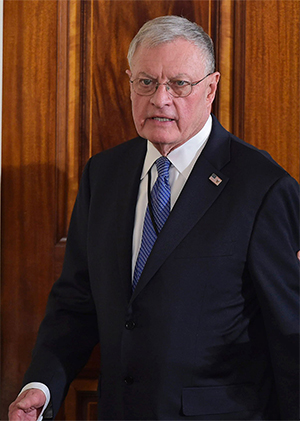
]
OFFICE OF GENERAL COUNSEL
U.S. HOUSE OF REPRESENTATIVES
5140 O’Neill House Office Building
Washington, D.C. 20515
SHER TREMONTE LLP
90 Broad Street, 23rd Floor
New York, New York 10004
ARNOLD & PORTER
601 Massachusetts Ave, NW
Washington, D.C. 20001
Counsel for the Congressional Defendants
UNITED STATES DISTRICT COURT
CENTRAL DISTRICT OF CALIFORNIA
SOUTHERN DIVISION
JOHN C. EASTMAN
Plaintiff,
vs.
BENNIE G. THOMPSON, et al.,
Defendants.
Case No. 8:22-cv-00099-DOC-DFM
Exhibit G6 SELECT COMMITTEE TO INVESTIGATE THE
7 JANUARY 6TH ATTACK ON THE U.S. CAPITOL,
8 U.S. HOUSE OF REPRESENTATIVES,
9 WASHINGTON, D.C.
13 DEPOSITION OF: KEITH KELLOGG, JR.
17 Tuesday, December 14, 2021
19 Washington, D.C.
22 The interview in the above matter was held in Room 4480, O'Neill House Office
23 Building, commencing at 10:02 a.m.
24 Present: Representatives Aguilar and Cheney.
1 Appearances:
5 For the SELECT COMMITTEE TO INVESTIGATE
6 THE JANUARY 6TH ATTACK ON THE U.S. CAPITOL:
7 TIM HEAPHY, CHIEF INVESTIGATIVE COUNSEL
8 DAN GEORGE, SENIOR INVESTIGATIVE COUNSEL
9 JENNA HOPKINS, PROFESSIONAL STAFF
10 SAMANTHA STILES, CHIEF ADMINISTRATIVE OFFICER
11 SADALLAH FARAH, RESEARCHER
12 EVAN MAULDIN, CHIEF CLERK
13 JOHN WOOD, SENIOR INVESTIGATIVE COUNSEL
14 AND OF COUNSEL TO THE VICE CHAIR
17 For KEITH KELLOGG, JR.:
18 JOHN COALE
Page 87
1 experts on election procedures.
2 Q So is that how you learned that the election -- through those conversations
3 and maybe similar ones like them -- is that how you learned that the election -- the
4 results weren't going to change?
5 A No. It was my own personal belief.
6 Q Okay.
7 A Because I saw -- what I saw happen, I just knew by the process and what I
8 think, that wasn't going to happen at all.
9 Q Did you talk to Justin Clark after the November 2020 election about
10 challenges?
11 A No.
12 Mr. George. Okay. Ms. Cheney, I noted that you unmuted. Do you have any
13 questions on this topic?
14 Ms. Cheney. No. I wanted to make sure we were back on the day of the 6th
15 and going moment by moment through that.
16 Mr. George. That's exactly where we're headed now, Ms. Cheney.
17 Ms. Cheney. Great. Thank you.
18 BY MR. GEORGE:
19 Q All right. So you mentioned earlier that you walked in, you saw Don, Jr.,
20 Lara, Eric Trump, and Kimberly. And then it sounds like you went to the Oval?
21 A Uh-huh.
22 Q Is that right?
23 A Yes. That's correct.
24 Q Okay. All right. Approximately when was that, if you could guess?
25 A Maybe around 9.
Page 90
1 A I was.
2 Q Okay. Was that before or after you were going over the President's
3 speech?
4 A It happened about the same time.
5 Q Okay. So let's talk about that then first.
6 What do you remember about that phone call to the Vice President?
7 A First of all, that was a muted phone call. What I mean by that is, we
8 didn't -- I didn't hear the response -- nobody could hear the response of the Vice
9 President.
10 Q So you could only hear what the President said --
11 A You only hear the President speaking back and forth going there. And he
12 told the Vice President that, you know, he has legal authority to send these folks back to
13 the respective States.14 And that's the reason I made a comment earlier -- I think I made it to you,
15 Tim -- that the White House Counsel was there and he didn't say anything.
16 Q The White House Counsel being the gray-haired guy?
17 A Yeah.
18 Q Okay.
19 A I wish I could remember his name. It was not Pat Cipollone.
20 Q Okay.
21 Mr. Wood. Can I just interrupt?
22 If we found a photo --
23 The Witness. If you can give me his name, I'd remember the name.
24 Mr. Wood. Well, Eric Herschmann was --
25 The Witness. I think it was Eric. I'm pretty sure it was Eric because -- I'm pretty
1 sure that's who it was.
2 Mr. Heaphy. He's a lawyer and he has gray hair.
3 The Witness. That's him. Pretty sure it was Eric.
4 Mr. Wood. If we found his photo and then showed it to you --
5 The Witness. I can show it to you, yeah, for sure.
6 Mr. Wood. I can do that if you want.
7 Mr. George. Yeah.
8 BY MR. GEORGE:
9 Q And while John's pulling that up, so you said he told the Vice President that
10 he has the legal authority to reject certain votes. Is that what you said?
11 A That he had the constitutional authority to do that, yes.
12 Q Okay. As President of the Senate in his Vice President's role --
13 A I think -- I didn't -- I can't recall, Dan, the exact words.
14 Q Okay.
15 A But words to the effect, in his role, what he was going to do that day, the
16 answer's yes.
17 Q What else did he say to the Vice President?
18 A That's it. He was just, you know, disappointed that he was not apparently
19 going to do that. But it was like that was kind of the conversation. And then by that
20 time, the President, the Vice President -- excuse me, Dan.
21 Q Yeah. Of course.
22 A That's him.
23 Q Eric Herschmann?
24 Mr. Wood. Yes.
25 The Witness. Because the Vice President was en route to the Capitol. I think
1 he had -- at that time he had gotten there, the conversation was over.
2 BY MR. GEORGE:
3 Q Okay. So you said the President was disappointed.
4 A Uh-huh.
5 Q I would assume from that phone call that the Vice President probably
6 sounded like he told him he wasn't going to --
7 A I would, based on what has happened, I would probably assume that, yes.
8 Q Okay. Let me rephrase that for the record's benefit.
9 I would assume from that call, what the President said to the Vice President, that
10 the Vice President told the President he wasn't going to use that authority that the
11 President said he had to reject certain votes?
12 A Yeah. I would make the same assumption, Dan, yeah.
13 Q Okay. It's also been reported that the President said to the Vice President
14 that something to the effect of, "You don't have the courage to make a hard decision."
15 And maybe not those exact words, but something like that.
16 Do you remember anything like that?
17 A Words -- and I don't remember exactly either, but something like that, yeah.
18 Like you're not tough enough to make the call.
19 Q Okay. Do you remember anything else along those lines?
20 A No, because it was a relatively short conversation.
21 Q What was the President's demeanor like during the call?
22 A Well, he was -- his demeanor, I would say, was frustrated. He hung up.
23 And after he hung up, we went right back to speech prep. He didn't get up, walk out,
24 yell, throw things. He just said okay and went back to the speech discussion.
25 Q Okay. And we're going to talk about that speech discussion, but it's been
***
[
"EXHIBIT "H": Attached hereto as Exhibit H is a true and accurate copy of a document produced by NARA to the Select Committee to Investigate the January 6th Attack on the U.S. Capitol.]
11:10 - Eric Trump, Don Jr., Kimberly Guilfoyle, IMT, GOS, Eric Herschmann,
__) Gen. Kellogg
11:17 - cw/Sen. Kelly Loeffler (11:20)
11:20 - cw/VPOTUS ( )
PRIVATE
Wednesday, January 6, 2021
10:50 AM (5 min): Depart The White House en route The Ellipse
11:00 AM (30 min): REMARKS AT THE SAVE AMERICA RALLY
Press: Open
Location: The Ellipse
11:35 AM (5 min): Depart The Ellipse en route The White House
11:40 AM: Arrive The White House
RON: The White House
1/6/2021: 11:22 AM
***
[
"EXHIBIT "I": Attached hereto as Exhibit I is a true and accurate copy of certain pages from the deposition of Marc Short by the Select Committee to Investigate the January 6th Attack on the U.S. Capitol on January 26, 2022.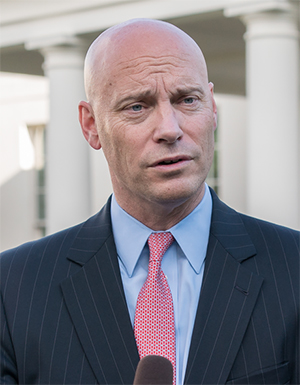
]
OFFICE OF GENERAL COUNSEL
U.S. HOUSE OF REPRESENTATIVES
5140 O’Neill House Office Building
Washington, D.C. 20515
SHER TREMONTE LLP
90 Broad Street, 23rd Floor
New York, New York 10004
ARNOLD & PORTER
601 Massachusetts Ave, NW
Washington, D.C. 20001
Counsel for the Congressional Defendants
UNITED STATES DISTRICT COURT
CENTRAL DISTRICT OF CALIFORNIA
SOUTHERN DIVISION
JOHN C. EASTMAN
Plaintiff,
vs.
BENNIE G. THOMPSON, et al.,
Defendants.
Case No. 8:22-cv-00099-DOC-DFM
Exhibit I4 SELECT COMMITTEE TO INVESTIGATE THE
5 JANUARY 6TH ATTACK ON THE U.S. CAPITOL,
6 U.S. HOUSE OF REPRESENTATIVES,
7 WASHINGTON, D.C.
11 DEPOSITION OF: MARC SHORT
15 Wednesday, January 26, 2022
17 Washington, D.C.
20 The deposition in the above matter was held in Room 5480, O'Neill House Office 21 Building, commencing at 10:13 a.m.
22 Present: Representatives Lofgren, Schiff, Raskin, Aguilar, Murphy, Cheney and
23 Kinzinger.
1 Appearances:
5 For the SELECT COMMITTEE TO INVESTIGATE
6 THE JANUARY 6TH ATTACK ON THE U.S. CAPITOL:
8 KATIE ABRAMS, STAFF ASSOCIATE
9 KRISTIN AMERLING, DEPUTY STAFF DIRECTOR & CHIEF COUNSEL
10 RICHARD R. BRUNO, ADMIN ASSISTANT AND SCHEDULER
11 STEPHEN WARD DEVINE, SENIOR LEGISLATIVE COUNSEL
12 SADALLAH A. FARAH, RESEARCHER
13 DANIEL A. GEORGE, SENIOR INVESTIGATIVE COUNSEL
14 TIMOTHY HEAPHY, CHIEF INVESTIGATIVE COUNSEL
15 CASEY ERIN LUCIER, INVESTIGATIVE COUNSEL
16 JOE MAHER, DETAILEE, DEPARTMENT OF HOMELAND SECURITY
17 EVAN B. MAULDIN, CHIEF CLERK
18 GRANT SAUNDERS, STAFF ASSOCIATE
19 SAMANTHA STILES, ADMINISTRATIVE OFFICER
20 JOHN F. WOOD, SENIOR INVESTIGATIVE COUNSEL
21 AND OF COUNSEL TO THE VICE CHAIR
24 For MARC SHORT:
1 EMMET FLOOD
2 RICHARD CLEARY
3 Williams & Connolly LLP
4 725 Twelfth Street, N.W.
5 Washington, D.C. 20005
Page 12
1 A There was a phone call from the President, and the Vice President excused
2 himself to take that call upstairs in his residence.
3 Q I see. All right. Let me turn to page -- to exhibit 30 in your binder and the
4 second page of that. This is a Presidential call log from the White House switchboard.
5 And at the very top of page 2, it indicates that, at 9:02 a.m., the President instructed the
6 operator to call back with the Vice President. And then, a couple of lines down, it
7 indicates at 9:15 the operator informed the President that a message was left for the Vice
8 President at 9:15.
9 Do you remember any discussion, Mr. Short, early during your time at the
10 residence that the President wanted to reach Vice President Pence?
11 A No. The only -- the only recollection I have is at some point during our
12 meeting a military aide knocked on the door and said the President was holding for the
13 Vice President, at which point he excused himself to take the call.
14 Q I see. And you said he went upstairs, so he was out of your earshot.
15 A Correct.
16 Q Okay. After he -- how long did the conversation -- or how long was he
17 gone?
18 A My best guess would be 15, 20 minutes.
19 Q Upon his return, did he share any details of the conversation with you?
20 A No.
21 Mr. Flood. Take your time. That was a yes or no, and you answered it.
22 BY MR. HEAPHY:
23 Q What was his demeanor when he returned?
24 A I think that the Vice President was focused on what we had to do as our
25 office that day. And so it was finishing, finalizing the letter and moving forward
Page 16
1 A Correct.
2 Q Well, on the third page of that document, at the very top, at 11:17, it
3 indicates: The President talked on a phone call to an unidentified person.
4 Reconstructing the testimony from other witnesses, that seems to us to be the
5 time in which he spoke to the Vice President. Does that roughly coincide with your
6 sense of the timing?
7 A I would -- that would make sense to me.
8 Q Okay. And that's the call that you described for which you were not
9 present?
10 A Correct.
11 Q Okay. Just to sort of complete this, the next tab is No. 34. This is another
12 White House document that indicates at the very top in handwriting: 11:20 call with
13 VPOTUS.
14 Again, is that consistent, roughly, with the timing, your understanding of when
15 that phone call between the President and the Vice President took place?
16 A No, it makes sense.
17 Q Okay. Now, I understand that you weren't on the call, but I just want to
18 read you something that was quoted in Bob Woodward's book "Peril," that he indicated
19 in "Peril" that the President said: If you don't do it, I picked the wrong man 4 years ago.
20 The President said: You're going to wimp out. He reportedly said to the Vice
21 President: You can be a hero, or you can be a pussy.
22 Do those -- do you have any recollection of having the Vice President recount to
23 you those words from the President?
24 A No.
25 Q In your involvement, Mr. Short, in discussing these issues and understanding
Page 26
1 Vice President did not think he had that authority and would not execute a discussion to
2 unilaterally reject electors.
3 And, at that point, there seemed to be a pivot to say, well, maybe you'd entertain
4 the notion of just sending them back. And I recognize there were other lawyers who
5 had argued that earlier.
6 But it was my opinion that the President's viewpoint shifted somewhere toward
7 the end of this time period. So those tweets that you referenced, John, are a revised
8 appeal to the Vice President. Instead of rejecting them, would you send them back to
9 the States.
10 Q And then Mr. Heaphy asked you about some quotes that have been publicly
11 reported from what President Trump allegedly said to the Vice President in that phone
12 call on the morning of the 6th. And I know you said that the Vice President at that time
13 did not tell you about the conversation they had, but did Vice President Pence ever later,
14 after these reports came out, such as the books, did Vice President Pence ever tell you
15 whether those reports about that phone call were accurate?
16 A I never felt the need to ask specifics on that, and I don't think he ever felt the
17 need to divulge specifics on that conversation.
18 Q So, no, he didn't tell you whether it was accurate?
19 A He has not specified the accuracy on that call.
20 BY MR. HEAPHY:
21 Q But just to pick up on that, Mr. Short, was it your impression that the Vice
22 President had directly conveyed his position on these issues to the President, not just to
23 the world through a Dear Colleague Letter, but directly to President Trump?
24 A Many times.
25 Q And had been consistent in conveying his position to the President?
1 A Very consistent.2 Mr. Heaphy. Okay. All right. Any other questions on the letter?
3 BY MR. HEAPHY:
4 Q Okay. Then I want to move on into the day.
5 Now that you're in the Capitol, it looks like the President began his speech on the
6 Ellipse at about noon. Then, at about 12:30, the President's supporters begin to
7 assemble at the Capitol. While he's still speaking, there's a crowd gathering at the
8 Capitol. At almost exactly 1 o'clock, Mr. Short, from video, Senators and the Vice
9 President are entering the House Chamber where the joint session is convened.
10 The Vice President shortly after 1 o'clock opens, and he reads a script about
11 ascertainment. There's been a lot of discussion about this. And I actually want to play
12 for you a clip of what the Vice President said at the beginning of the joint session and
13 compare it to what other Vice Presidents have said at the beginning of the session.
14 So, if we could turn to the screen, we've got a clip that I want to ask you some
15 questions about after.
16 [Video played.]
17 BY MR. HEAPHY:
18 Q All right. So, obviously, Vice President Pence in 2021 alters, amplifies, adds
19 language to the script that had been read by Vice Presidents reaching back 20 or 30 years.
20 Tell us about the decision, the purposeful decision by Vice President Pence to add that
21 language to the ascertainment script.
22 A Well, I should say that these scripts were coordinated with the
23 Parliamentarian to make sure they were in accord with regular -- whatever the House and
24 Senate rules require. But the predominant reason was that the Vice President wanted
25 to be as transparent as possible because, to the previous exhibit you asked me to look at,
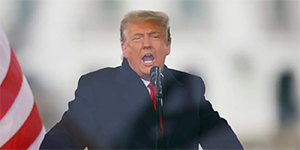

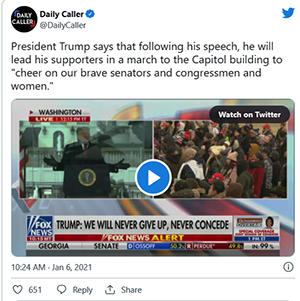
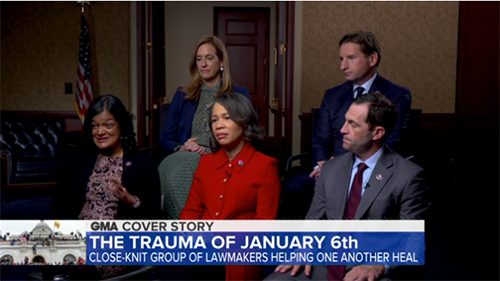
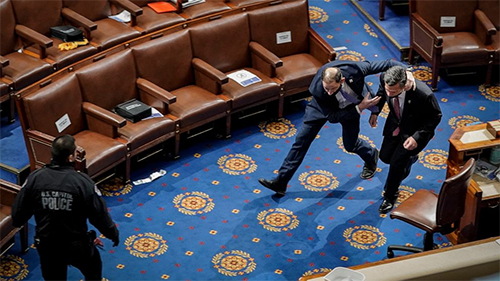
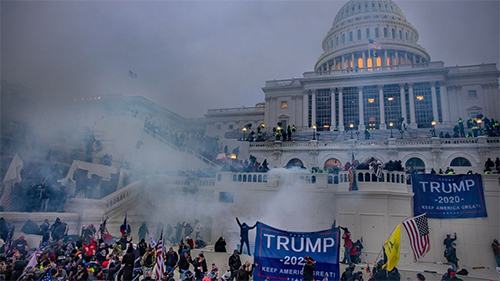
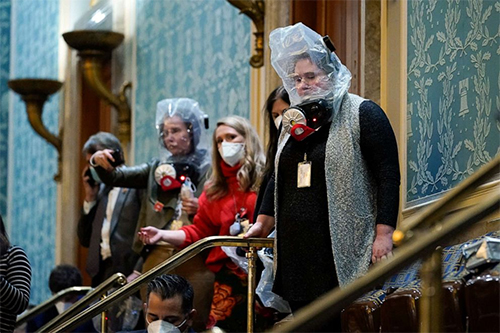
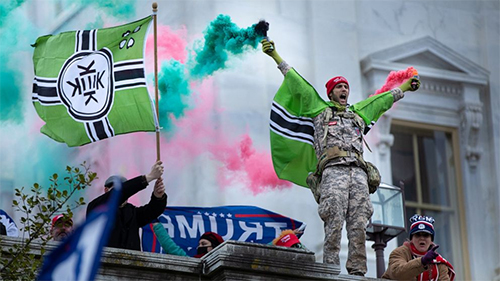
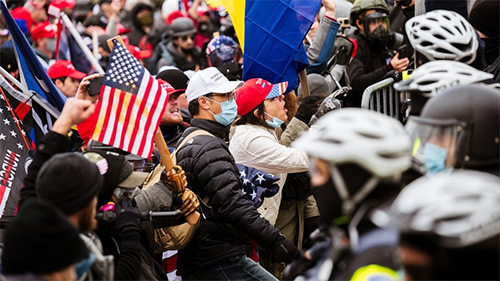

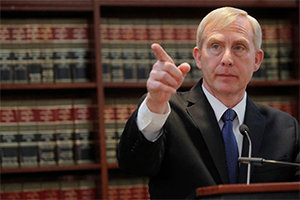 ]
]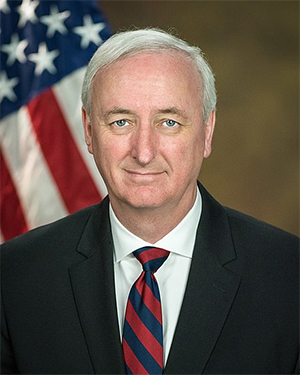 ]
]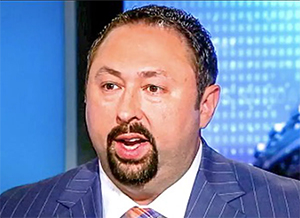 ]
] ]
] ]
] ]
]